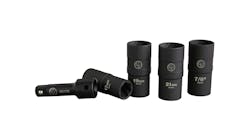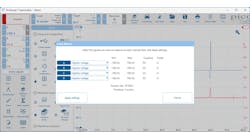In 2000, the U.S EPA (www.epa.gov) set forth specific requirements for medium and heavy duty on-highway truck engines to reduce emissions of both particulate matter (PM), also referred to as soot, and nitrogen oxide (NOx) – the generic term for a group of highly reactive gases. The requirements would be phased in over a number of years, starting with Model Year 2004 and later trucks, gradually reducing the legal levels of emissions.
To meet these stringent emission standards, engine and truck manufacturers made design changes and introduced new emissions technologies and exhaust aftertreatment systems, including selective catalytic reduction (SCR), exhaust gas recirculation (EGR), diesel exhaust fluid (DEF) and diesel particulate filters (DPF), says Mel Kirk, vice president of maintenance and quality operations for Ryder (www.ryder.com), a leader in commercial fleet and supply chain solutions. He oversees the company-wide efforts to drive operational excellence throughout Ryder’s 800 service locations in North America that support a growing network of more than 35,000 customers and 160,000 vehicles.
Kirk noticed that Ryder’s maintenance managers were spending most of their time on maintaining vehicles Model Years 2004 to 2007, more so than on vehicles produced before 2004.
Because of the diversity of its fleet, the industries they are used in and their drive and duty cycles, Ryder started to see this development about 18 months ago, a bit ahead of the industry, overall. He says, “What we saw was a substantially higher rate of failure on the DPF, in particular, and with many of the components that surround that filter.”
WHERE IS THE TROUBLE?
Trying to determine the causes for these failures has not been easy due to the added technology on vehicles and the complex emissions systems, explains Kirk. It used to be a simple matter to find the source of a coolant leak, but nowadays it’s more involved because loss of coolant can mean clogged or damaged exhaust components.
As an example, he says a coolant loss repair in 2005 might have taken a few hours and cost a couple hundred dollars, on the high side, to complete. Now, if the same coolant loss is left unchecked for a period of time, it could result in a multiple-day downtime event and cost thousands of dollars to fix.
Adding to the complexity of problem solving is the significant increase in engine fault codes, notes Kirk. In 2004, an engine with EGR may have had 150 fault codes. In 2010, with the DPF, SCR and DEF all together in one configuration, there could be more than 450 fault codes on one engine. “Multiply that by the number of types of engines and the number of OEM configurations and the technician’s task becomes considerably more difficult.”
This was a time when a technician “had a hammer, screwdriver and a variety of wrenches to solve a problem,” he goes on. “Now, you can’t even begin to solve the problem without computer-based technology and some type of diagnostic solution that allows a technician to evaluate vehicle systems.”
Like many other organizations, Ryder continually strives to keep its technicians trained and to make sure its shops have the necessary tools, diagnostics and equipment to maintain and service today’s high-tech vehicles.



